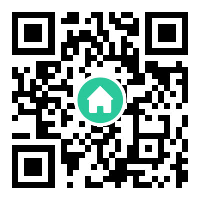Telegram web apps have emerged as a powerful tool for developers and businesses seeking to integrate interactive experiences directly within the Telegram messaging platform. By leveraging the Telegram Bot API and the Telegram Web Apps framework, developers can create lightweight, cross-platform applications that operate seamlessly within chats or inline menus. These web apps combine the accessibility of browser-based tools with the native feel of Telegram’s interface, offering users a frictionless way to interact with services without leaving their favorite messaging app.
What Are Telegram Web Apps?
Telegram web apps are JavaScript-based applications hosted on external servers but rendered within Telegram’s interface. Unlike traditional bots limited to text-based interactions, web apps support rich UIs, real-time data processing, and multimedia integration. They function as mini-programs accessible via inline buttons in chats or through dedicated bot commands. For instance, a retail brand could deploy a web app to let users browse products, customize orders, and complete payments without ever switching to a separate browser tab. This hybrid approach bridges the gap between messaging convenience and full-scale application functionality.
Key Features and Technical Advantages
The Telegram Web Apps framework provides developers with critical features like secure authentication via Telegram’s login widget, device-specific theming, and access to platform-specific APIs. The WebApp.initData parameter enables seamless user identification by sharing encrypted Telegram account details, eliminating the need for separate registration forms. Additionally, web apps automatically adapt to Telegram’s dark/light mode settings and support biometric authentication on mobile devices. From a performance perspective, these apps benefit from Telegram’s CDN infrastructure, ensuring fast loading times even for media-heavy interfaces.
Use Cases Across Industries
Practical applications of Telegram web apps span multiple sectors. In e-commerce, businesses deploy size-configurator tools that let customers visualize products in augmented reality. Educational platforms utilize web apps for interactive quizzes and virtual classroom interfaces. Financial services leverage Telegram’s encryption to build secure crypto wallets or stock trading dashboards. One notable example includes food delivery services that combine order tracking maps with instant chat support—all within a single Telegram chat window. The gaming industry particularly benefits through HTML5 game integrations, where users can play turn-based multiplayer games directly in group chats.
Monetization and Ecosystem Integration
Telegram’s native payment system for web apps enables frictionless monetization through in-app purchases and subscriptions. Developers can integrate Stripe, Apple Pay, or local payment gateways while maintaining compliance with Telegram’s 5% revenue share model. The platform’s "Mini Apps" concept further allows persistent web app shortcuts in chat menus, encouraging repeated engagement. Brands increasingly use these tools for loyalty programs—for example, coffee chains offering reward point dashboards that sync with Telegram’s notification system for personalized offers.
Security Considerations and Limitations
While Telegram web apps employ end-to-end encryption for data transmission, developers must implement additional security layers for sensitive operations. The platform restricts access to certain device features like GPS or camera APIs unless explicitly granted through permission prompts. Current limitations include a 50MB storage cap for cached data and restrictions on WebSocket connections for real-time updates. However, Telegram’s recent updates show commitment to expanding capabilities, with planned support for progressive web app (PWA) features like offline functionality.
Future Outlook and Developer Opportunities
As Telegram approaches 1 billion active users, its web app ecosystem presents growing opportunities for developers. The upcoming Fragment decentralized identity system could enable cross-app reputation scores and verified developer credentials. With Telegram’s open API documentation and active developer community, new integrations with decentralized storage networks and AI chatbots are already in development. Companies adopting Telegram web apps early report 40% higher user retention compared to standalone mobile apps, signaling a shift toward conversational interfaces in digital product design.
Telegram web apps represent more than just a technical novelty—they redefine how users interact with services in an increasingly message-centric digital landscape. By combining Telegram’s massive user base with web technologies’ flexibility, this platform empowers businesses to deliver immersive experiences where their audience already spends time: in private and group chats.








